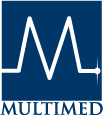A Prospective Survey of Knowledge and Perceptions of Ondansetron: What do Health Care Workers Know about this Drug?
DOI:
https://doi.org/10.4212/cjhp.v48i6.2337Keywords:
health care workers, ondansetron, survey, perceptions, ondansétron, professionnels de la santé, sondageAbstract
ABSTRACT
Ondansetron is a relatively new drug whose optimal use is dependent on an understanding of its characteristics and role relative to traditional antiemetics. To assess perceptions and knowledge regarding ondansetron, we conducted a prospective written survey involving 56 physicians, pharmacists, and nurses at this hospital.
Pharmacists claimed to be exposed to ondansetron promotion by industry more than the other groups. Apart from industry, pharmacists were considered to be the most common source of drug information. Nurses were less aware of dosage form equivalence than the other groups (p=0.042). Physicians were more aware of twice daily dosing efficacy than other respondents (p=0.0006). Nurses were able to better identify the relative duration of antiemetic benefit over metoclopramide (p=0.008); however, most participants tended to be misinformed on this issue. Pharmacists were more familiar with the side effect profile while physicians were more cognizant of oral (p=0.001) and parenteral (p=0.018) drug costs than other groups. Overall, survey scores for physicians and pharmacists were higher than those for nurses (p=0.007).
There is an apparent difference across health care profession disciplines in perceptions and knowledge about ondansetron. Specific misconceptions could lead to suboptimal drug use and warrant efforts to ensure a good understanding of the attributes and relative role of this agent.
RÉSUMÉ
L'ondansétron est un agent relativement nouveau dont l'usage optimal est tributaire des connaissances qu'on a des caractéristiques et du rôle des antiémétiques classiques. Nous avons mené un sondage prospectif par écrit auprès de 56 médecins, pharmaciens, infirmiers et infirmières à cet hôpital, pour évaluer les perceptions et les connaissances de chacun à ce chapitre.
Les pharmaciens ont déclaré être plus fortement exposé que les autres groupes à la promotion que l'industrie pharmaceutique fait de l'ondansétron. Ceux-ci ont également été considérés comme la source d'information sur les médicaments la plus courante, mis à part l'industrie pharmaceutique. Les infirmiers et infirmières étaient pour leur part moins au courant des équivalences des formes posologiques que ne l'étaient les autres groupes (p = 0,042). Les médecins étaient par ailleurs plus aux faits de l'efficacité de la posologie biquotidienne que les autres (p = 0,0006). Cependant, les infirmiers et infirmières étaient en mesure de mieux identifier la durée de l'effet antiémétique bénéfique de l'ondansétron comparativement au métoclopramide (p = 0,008); la plupart des répondants semblaient toutefois être mal informés à ce sujet. Les pharmaciens étaient plus familiers avec le profil d'effets indésirables et les médecins plus au courant du coût des formes orale (p = 0,001) et parentérale (p = 0,018) du médicament, comparativement aux autres répondants. Dans l'ensemble, les cotes des médecins et des pharmaciens obtenus à ce sondage étaient supérieures à celles des infirmiers et infirmières (p = 0,007).
Il semble y avoir une différence appréciable parmi les professionnels de la santé en ce qui concerne les perceptions et les connaissances que ceux-ci ont de l'ondansétron. Les fausses idées pourraient bien mener à un usage suboptimal du médicament. C'est pourquoi l'on doit s'efforcer de véhiculer les bonnes connaissances relativement aux caractéristiques et au rôle relatif de l'ondansétron.Downloads
Downloads
Published
Issue
Section
License
Copyright © Canadian Society of Healthcare-Systems Pharmacy.
After publication of a manuscript in the CJHP, the authors of the manuscript must obtain written permission from the CSHP (publications@cshp.ca) before reproducing any text, figures, tables, or illustrations from the work in future works of their own. If a submitted manuscript is declined for publication in the CJHP, all said rights shall revert to the authors. Please note that any forms (e.g., preprinted orders and patient intake forms) used by a specific hospital or other health care facility and included as illustrative material with a manuscript are exempt from this copyright transfer. The CJHP will require a letter from the hospital or health care facility granting permission to publish the document(s).









